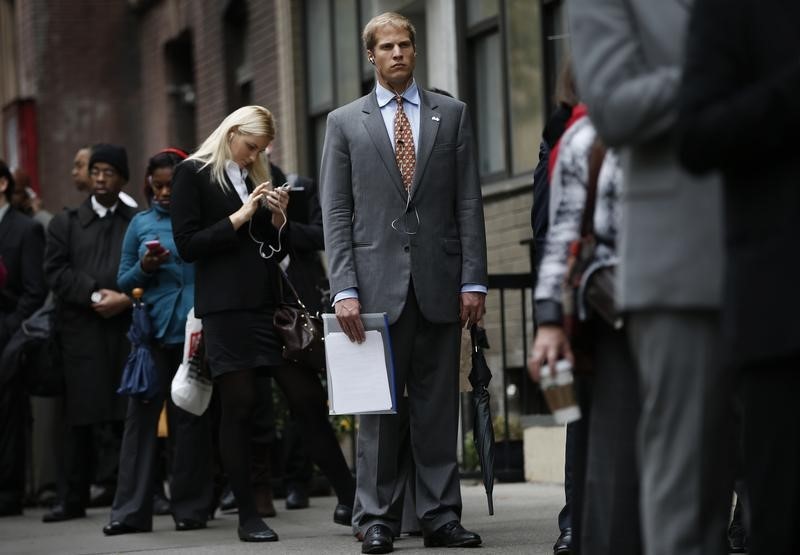By Geoffrey Smith
Investing.com -- ‘Two steps forward, one step back’ remained the watchword for the U.S. labor market last week, as the number of people making initial claims for jobless benefits rose to 770,000.
That defied expectations of a drop to 700,000. The previous week’s number was also revised higher to 725,000 from an initial estimate of 712,000.
However, the overall number of those claiming under all unemployment-related insurance schemes resumed its downward trend, falling by some 1.9 million to 18.216 million. The broader numbers are reported with a one-week lag to the initial claims numbers.
The numbers, which continue to show layoffs at a rate far in excess of what was usual before the pandemic, give support to the Federal Reserve's assessment of a high level of slack in the labor market, which is the key assumption underlying the central bank's continued belief that it will not have to raise interest rates before 2024.
Diane Swonk, chief economist with Grant Thornton, said via Twitter that the data "suggests we should see another solid gain in employment in March," although she noted that the U.S. economy is "still 9.5 million jobs in hole, mostly in service sector, including education."
The figures contrasted sharply with the - less nationally relevant - Philadelphia Federal Reserve monthly business survey, which was published at the same time. The Philly Fed's Business Conditions index rose strongly to 61.6 in March from 39.6 in February, while the manufacturing index soared to its highest level since the mid 1970s. Orders, shipments and backlogs all rose, while the prices paid index hit the highest level since 1980.
The Philly Fed's survey underscored the strain on a manufacturing sector that is struggling to restock after running down inventory levels last year while recurrent outbreaks of Covid-19 repeatedly snarled global supply chains. A global shortage of semiconductors is currently affecting production of products as diverse as mobile phones and cars, while freight costs have soared as shipping companies have struggled to keep pace with the reallocation of consumer spending from services to goods.
Financial markets were paying more attention to the signs of near-term overheating than the long-term labor market outlook on Thursday. The yield on the 10-Year U.S. Treasury note rose to 1.74%, its highest since January 2020, while the 30-Year yield topped 2.50% for the first time since 2019 in the overnight session. The Treasury is due to auction 10-year inflation-linked securities later Thursday.
